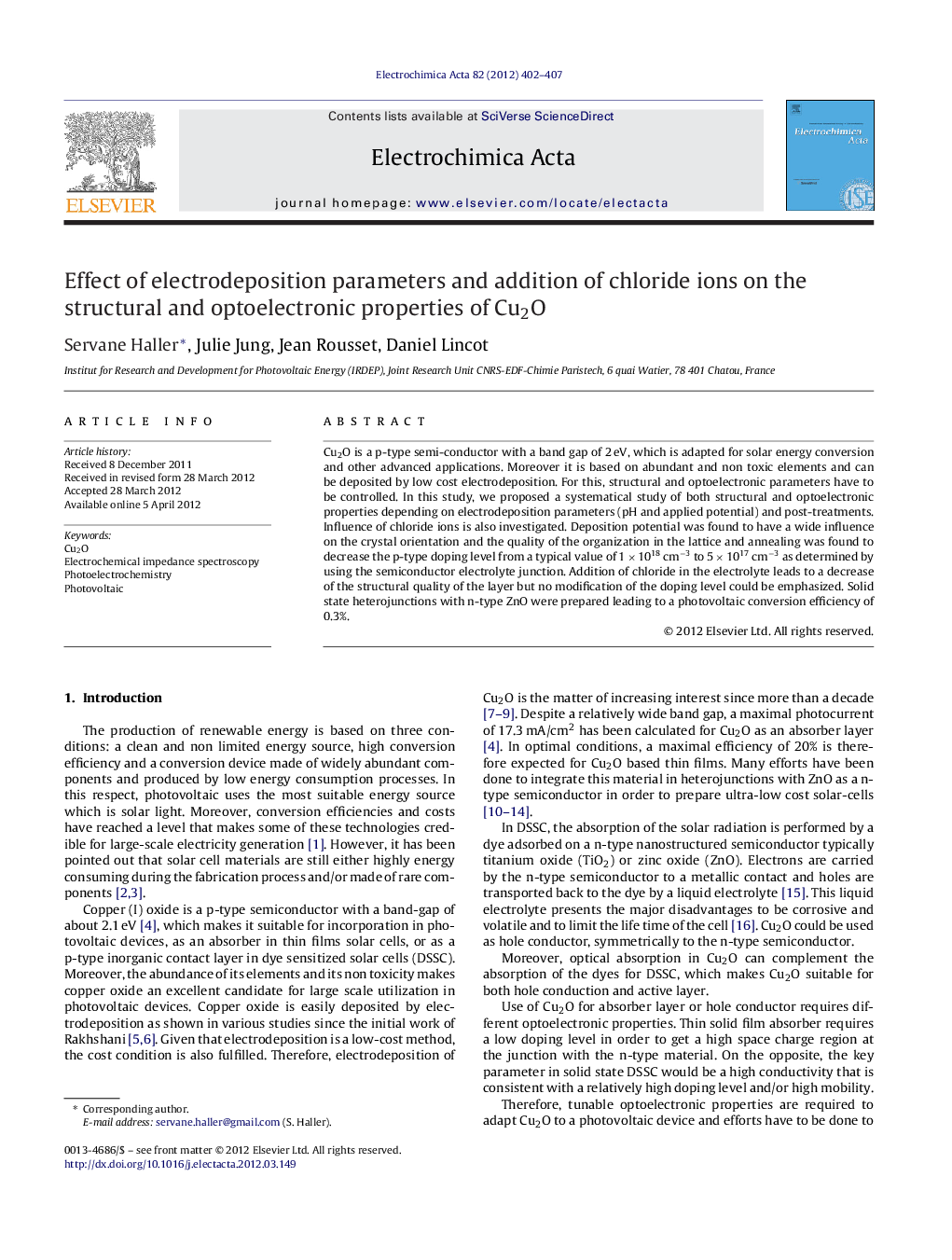| Article ID | Journal | Published Year | Pages | File Type |
|---|---|---|---|---|
| 6618353 | Electrochimica Acta | 2012 | 6 Pages |
Abstract
Cu2O is a p-type semi-conductor with a band gap of 2Â eV, which is adapted for solar energy conversion and other advanced applications. Moreover it is based on abundant and non toxic elements and can be deposited by low cost electrodeposition. For this, structural and optoelectronic parameters have to be controlled. In this study, we proposed a systematical study of both structural and optoelectronic properties depending on electrodeposition parameters (pH and applied potential) and post-treatments. Influence of chloride ions is also investigated. Deposition potential was found to have a wide influence on the crystal orientation and the quality of the organization in the lattice and annealing was found to decrease the p-type doping level from a typical value of 1Â ÃÂ 1018Â cmâ3 to 5Â ÃÂ 1017Â cmâ3 as determined by using the semiconductor electrolyte junction. Addition of chloride in the electrolyte leads to a decrease of the structural quality of the layer but no modification of the doping level could be emphasized. Solid state heterojunctions with n-type ZnO were prepared leading to a photovoltaic conversion efficiency of 0.3%.
Related Topics
Physical Sciences and Engineering
Chemical Engineering
Chemical Engineering (General)
Authors
Servane Haller, Julie Jung, Jean Rousset, Daniel Lincot,
